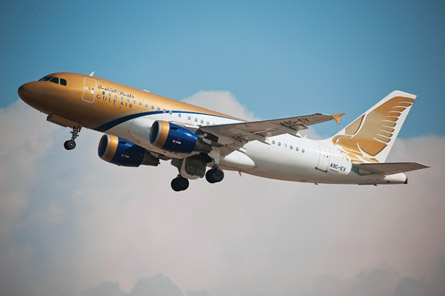Another year; another Gulf Air attempt to haul itself back to profitability. The uncharitable view of prospects for Bahrain's flag-carrier - which once enjoyed a virtual monopoly of hub-and-spoke services in the Middle East - is that it faces a hopeless struggle against three well-funded and fast-expanding network carriers, as well as a host of smaller regional rivals.
As the likes of Emirates, Etihad and Qatar Airways have raced to add aircraft and personnel, Gulf Air has struggled to slim its long-haul operations and large workforce enough to return to the black.
 |
|---|
| © Gulf Air |
A more positive spin might be that under chief executive Samer Majali, the state-owned carrier has been making huge strides towards reinventing itself as a leaner, fitter airline, with one of the youngest fleets in the region - progress that was thrown into reverse in 2011 by the internal unrest in Bahrain which led to the kingdom's visitors and investors departing.
Evidence of Gulf Air's restructuring efforts are likely to be highlighted at the Bahrain air show, with strong indications that the carrier will commit to Bombardier's CSeries as part of a fleet downsizing to smaller, short-haul aircraft.
Although no one is confirming anything, all indicators point to a deal. The Canadian manufacturer is shipping several communications personnel to the show, often a sign that a big announcement is in the offing. A $328 million Bombardier deal was confirmed in an April 2011 release by Bahrain's governmental tender board, while the Canadian manufacturer announced a series of CSeries orders from unnamed customers.
Majali may also use the show to shed more light on the wider strategy. Speaking at the recent Arab Air Carriers Organisation conference in Abu Dhabi, the former Royal Jordanian boss, who joined Gulf Air in 2009, admitted 2011 had been a "difficult year" after the airline had met all its key performance indicators under a three-year restructuring programme in 2010. The objective in 2011 - before the effects of the Arab Spring - had been to cut losses to less than 100 million Bahraini dollars ($265 million).
Majali said that although there were signs of recovery since the summer, "the pace is slow". However, the disruption was a "temporary setback" which had set the profitability timetable back by "just one year".
Gulf Air has already made moves towards reshaping its fleet, by reducing its Boeing 787 order backlog from 24 to 16. At the first Bahrain air show in 2010, it committed to its first Embraer regional jets and now operates two leased E-190s and two E-170s under an eight-year lease. Six Airbus A320s are due to arrive this year.
The airline has also been slimming down its infrastructure. In 2010, it divested its training and maintenance arms into independent, state-run businesses, Gulf Aviation Academy and Gulf Technics.
Gulf Air got directly caught up in the politics of the Arab Spring revolts. A large number of employees were dismissed for "unauthorised absence" during the protests against the government, although 147 were reinstated under a government amnesty last year.
Majali and his colleagues will be hoping to put a ghastly 2011 as far behind them as possible, and that developments announced at the Bahrain air show will mark a significant step in getting what was once the biggest name in Middle East aviation back on financial course.
- Additional reporting by David Kaminski-Morrow in Abu Dhabi
Source: Flight International



















